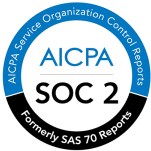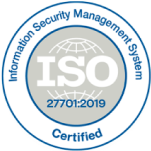Did you know? As per a Gartner study, end-user spending on cloud services is projected to grow from $595.7 billion in 2024 to a staggering $723.4 billion in 2025—a 21.5% increase.
Cloud has enabled businesses to operate better, offering scalability, flexibility, and cost efficiency. It enables organizations to deploy applications faster, adapt to changing market demands, and innovate without the constraints of traditional IT infrastructure.
However, despite these advantages, many organizations struggle with effective AWS cost reduction, where the sheer variety of services and pricing models can be overwhelming. Mismanagement often leads to spiraling expenses and wasted resources, overshadowing the potential savings and efficiencies that cloud computing promises.
To truly maximize cloud cost savings and avoid unnecessary expenses, it is crucial to go beyond surface-level understanding and separate the myths from the realities surrounding AWS cost reduction. By adopting proven strategies, businesses can make informed decisions, align cloud spending with organizational goals, and unlock the full potential of their AWS investments.
Common Myths and Realities About AWS Cost Reduction
Myth 1: AWS is inherently expensive
Reality: AWS provides a variety of cloud pricing models tailored to different business needs, allowing organizations to control and optimize their spending.
Explanation:
- On-Demand Pricing: Pay-as-you-go model ideal for unpredictable workloads.
- Reserved Instances (RIs): Commit to long-term use and receive significant discounts.
- Spot Instances: Leverage unused capacity for non-critical workloads at highly discounted rates.
- Savings Plans: Combine flexibility and savings by committing to consistent usage levels.
Here are 7 effective strategies that can help you achieve up to a 15% reduction in your AWS bills instantly. By implementing these cloud cost-saving techniques, you can optimize your cloud infrastructure and maximize your budget.
Myth 2: Auto-scaling always enables AWS cost reduction
Reality: Auto-scaling optimizes resource usage but may lead to cost overruns if not configured properly.
Explanation:
- Auto-scaling adjusts resource capacity to match demand. However, improper thresholds or misaligned configurations can lead to over-provisioning.
- Set realistic thresholds based on historical traffic data.
- Regularly review scaling policies to align with business needs.
- Combine auto-scaling with Spot Instances for further savings.
Here’s a guide to AWS Auto Scaling to maximize cost-effectiveness. Learn architectural best practices and strategies for AWS cost reduction and optimizing resource usage.
Myth 3: Migrating to AWS automatically reduces costs
Reality: Cloud Cost savings require strategic planning and optimization post-migration.
Explanation:
- Simply migrating workloads without proper optimization may lead to inefficiencies, such as over-provisioned resources or underutilized services.
- Conduct a detailed cost analysis before migration.
- Right-size instances and use Reserved Instances or Savings Plans for predictable workloads.
- Continuously monitor and optimize cloud usage post-migration.
For effective cloud cost management and to optimize your AWS spending, it's essential to delve into a comprehensive "Cloud Cost Optimization Guide." This guide will provide you with a deep understanding of various strategies and techniques that can be tailored to your specific business needs. By carefully analyzing your cloud usage patterns, identifying cost-saving opportunities, and implementing best practices, you can significantly reduce your AWS expenses.
Myth 4: Cost optimization is a one-time activity
Reality: AWS cost optimization is an ongoing process that requires regular review and adjustments.
Explanation:
- Cloud environments evolve rapidly, and workloads, pricing models, and services change over time. Without continuous monitoring, inefficiencies can creep in.
- Schedule periodic reviews of resource utilization.
- Train teams on AWS cost reduction and cloud cost management best practices.
- Leverage AWS cost optimization tools like Cost Explorer and Trusted Advisor for automated insights.
- Use Reserved Instances and Savings Plans for long-term cloud cost savings.
- Set up cost anomaly detection with AWS Budgets and CloudWatch to catch surprises early.
- Adopt a FinOps culture for shared responsibility across teams.
Gain a comprehensive understanding of cloud cost optimization with an in-depth guide covering everything from best practices to key challenges & solutions and more.
Myth 5: Moving to serverless automatically ensures AWS cost reduction
Reality: Serverless computing can lead to cost overruns if not implemented and monitored effectively.
Explanation:
Serverless services like AWS Lambda charge based on execution time and requests, which can add up quickly with high volumes or inefficient code.
- Inefficient function design, excessive retries, or unoptimized memory allocation can increase costs.
- Monitor invocation patterns and optimize function execution times to avoid unnecessary expenses.
- Use cloud cost visibility platform like CloudKeeper Lens to track serverless-related costs and identify optimization opportunities.
- Combine serverless with cost management best practices, like setting alerts for unexpected spikes in usage.
- Serverless is powerful, but it requires careful planning and monitoring. By optimizing function design and usage, you can unlock its cost-saving potential without surprises.
Explore our Serverless Cost Optimization Guide to learn actionable tips and strategies to maximize serverless efficiency while managing expenses.
Myth 6: You only pay for what you use
Reality: You pay for what you provision, whether you use it or not!
In the cloud, costs aren’t just about what you use—they’re about what you set aside. You’re billed for the resources you allocate, whether you fully utilize them or not. That difference between what you planned for and what you actually use can lead to spike in your cloud bills. Learn more in detail uncover the myths and secrets behind your cloud bill, with examples to stay aware and plan for AWS cost reduction in a better way.
Actionable Tips for Effective AWS Cost Reduction
Effective AWS cost reduction requires a multi-faceted approach. Begin by monitoring and analyzing spending using CloudKeeper Lens to uncover spending trends and inefficiencies. And some more useful tips that you can implement:
- Tag resources effectively to track costs by department, project, or environment, making it easier to identify and address areas of overspending.
- For predictable workloads, leveraging Reserved Instances and Savings Plans can result in substantial discounts.
- Evaluate your usage patterns regularly to determine the appropriate level of commitment and maximize savings.
- Optimizing storage costs is another critical step. Implement S3 lifecycle policies to automatically transition infrequently accessed data to lower-cost storage classes and delete unused snapshots or clean up orphaned volumes to avoid unnecessary charges
- For flexible workloads such as batch jobs or CI/CD pipelines, adopting Spot Instances can significantly reduce costs. Use tools like EC2 Auto Scaling and Spot Fleet to efficiently manage these instances without compromising performance.
- Rightsizing is a key practice to ensure resources are utilized effectively. Regularly assess resource utilization and adjust instance sizes based on current needs, leveraging AWS’s Compute Optimizer to identify underutilized resources.
- Finally, implement governance tools such as AWS Budgets and AWS Cost Anomaly Detection to monitor and control costs proactively. Establish clear governance policies to prevent resource sprawl and maintain an efficient cloud environment.
By debunking myths and following these strategies, businesses can unlock real cost savings on AWS and achieve sustainable cloud efficiency.









